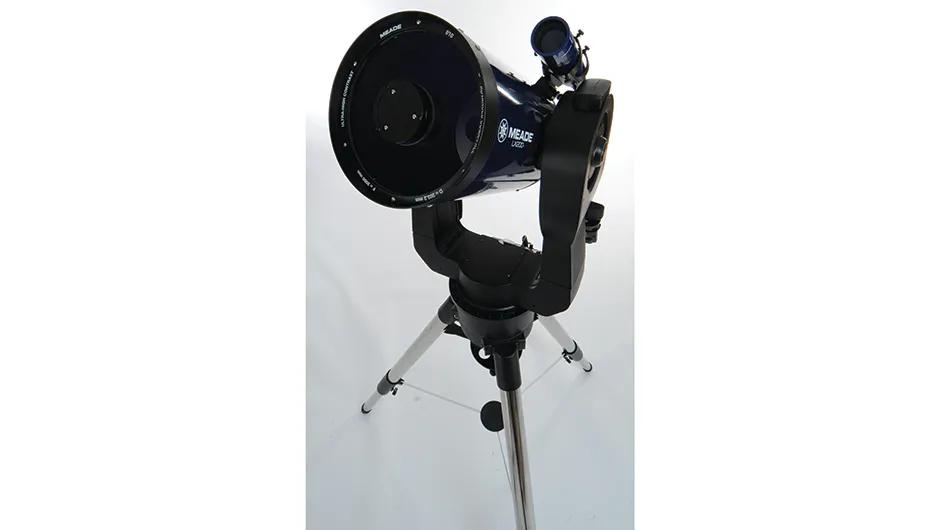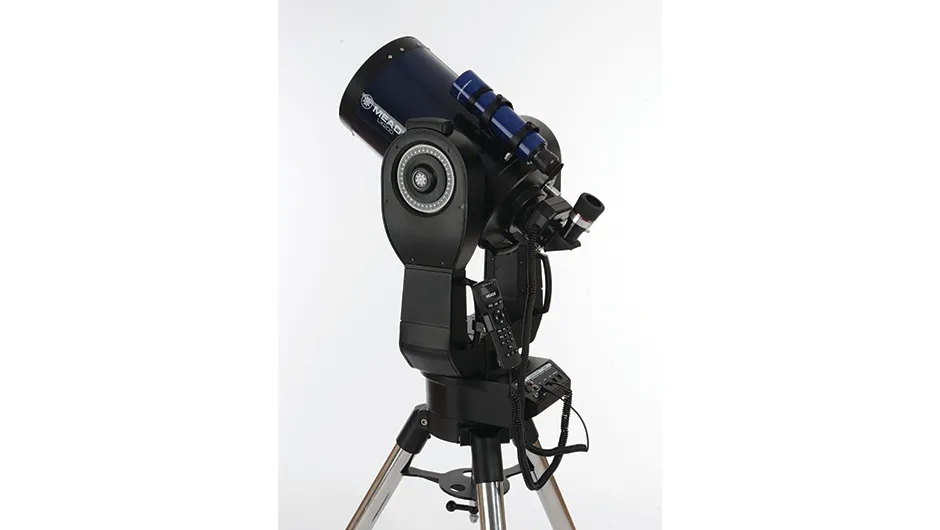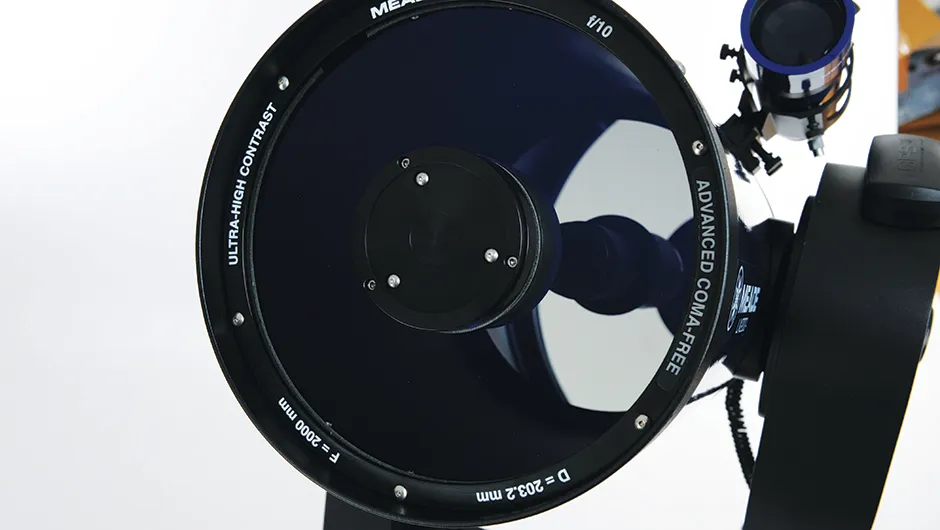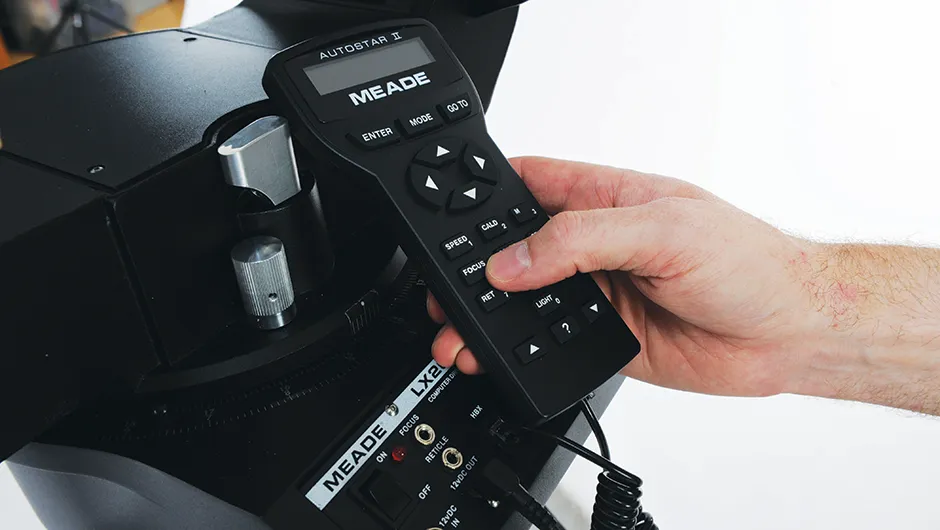The Meade LX200 range first appeared in 1992. Based on a folded optics Schmidt-Cassegrain design, itsdistinctive blue optical tubes and black, heavy-duty forks have become something of an icon.
The ‘classic’ LX200 design hasundergone several changes since its inception: the 8-inch model we’re looking at here represents the latest incarnation, with GPS-assisted setup and advanced coma-free (ACF) optics.
This telescope features in our guide to the best telescopes for observing planets

The telescope tube is sold both with the mount and separately.
The heavy-duty forks are coupled to a base unit, which contains a Go-To computer system that operates drives attached to both axes of movement.
The forks offer altaz movement by default.
After a simple alignment process, optionally assisted by a built-in GPS receiver, the computer knows where and when it is in the world.
It can also convert its altaz movement to the equatorial coordinate system against which all celestial bodies appear to move, allowing the Go-To computer to locate and keep track of objects upon request.
Lifting the 33kg telescope assembly onto the supplied field tripod requires a bit of muscle, but it can be done without assistance.

The lifting handles on each fork on the tube base really help here.
The Go-To computer is controlled by an AutoStar II handset, which plugs into the base of the mount. Add 12V power and you’re away.
Setting up was straightforward, as was alignment with the sky.
We did experience a few oddities, such as the scope not being able to locate the full Moon despite apparently correct date, time and location information.
These glitches were few and far between though.
Rounded package
Optically, the telescope is impressive and does deliver the sharp edge-to-edge stars promised in the manual, thanks to its ACF optics.
The view has great contrast too thanks to Meade’s ultra-high transmission coatings – this is despite the inevitable loss of contrast due to the central obstruction of the Schmidt-Cassegrain design.
We really enjoyed the simplicity of the Go-To system for deep-sky objects.
We did a mini-tour of a number of summer globulars, including M10, M12, M13 and M92.

The scope confidently resolved them and displayed the unique character of each one through the supplied 26mm Plössl eyepiece.
The Wild Duck Cluster, M11, looked magnificent, like a cloud of stars crossed by dark lanes.
The ACF optics really came into their own here, keeping all of the stars sharp like scattered diamonds.
The nebulosity of the Swan Nebula, M17, appeared as a large, long central bar, with an extension that is supposed to represent the neck of a swan.
The nebula was quite faint but definitely there.
Searching for stars, Albireo in Cygnus looked fantastic, with the yellow and azure colours of its two components standing out dramatically.
The two tight pairs in the Double Double, Epsilon Lyrae, were tricky to spot with the supplied 26mm Plössl, but easy to split when we used our own 15mm eyepiece.
Overall, our test viewing experiences were great fun and efficient thanks to the accuracy of the Go-To.
To be picky, there were a few minor issues with the scope.
For example, performing a fast slew in the dead of night wasn’t the quietest of operations, while the corrector plate that covers the front aperture had a tendency to fog over in the damp of a UK evening.

A dew shield or heater strips would help here.
The collimation hex bolts on the secondary were also a bit fiddly; we’d ideally like to see those replaced with thumbscrews.
These are small issues though and shouldn’t detract from the fact that this is a superb tool for exploring the night sky.
Our overriding impression is one of a solid performer that is just about portable.
The accurate Go-To and crisp views make it a great starter scope for a serious beginner and, with an optional equatorial wedge, it is also useful for long-exposure astrophotography.
On this topic, the scope is suitable for use with CCD, DSLR and high frame rate planetary cameras.
Vital stats
- Price £2699.00
- Aperture 203mm (8 inches)
- FocalLength 2000mm, f/10
- Eyepieces 26mm Plössl
- Mount Heavy-duty fork with built in Go-To computer system
- Weight 33kg
- Supplier Telescope House
- Telephone 01342 837610
- Websitewww.telescopehouse.com